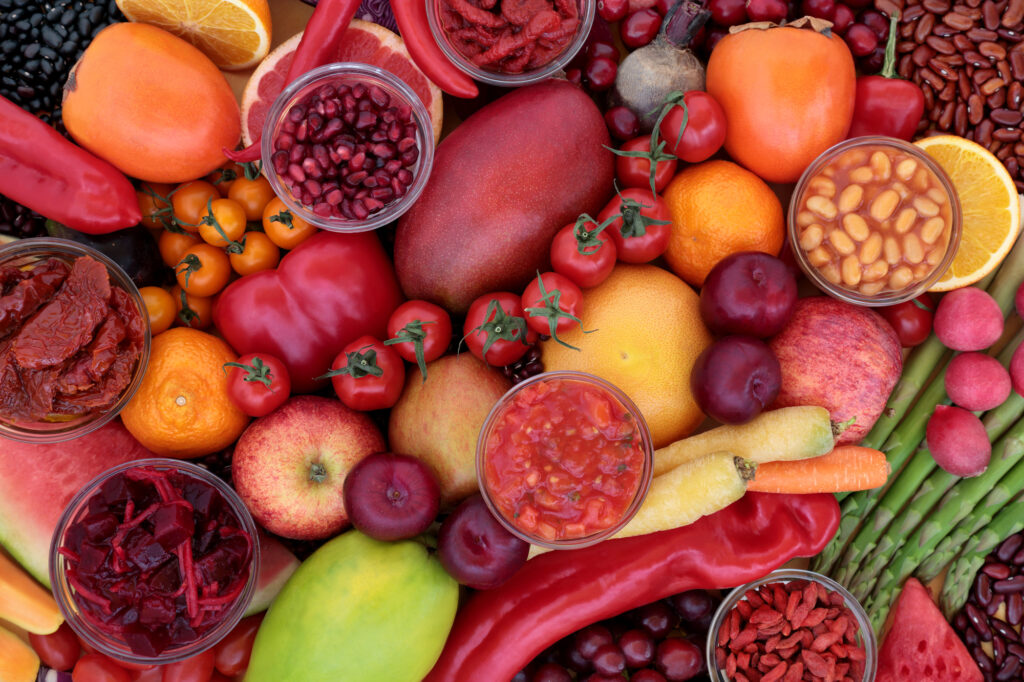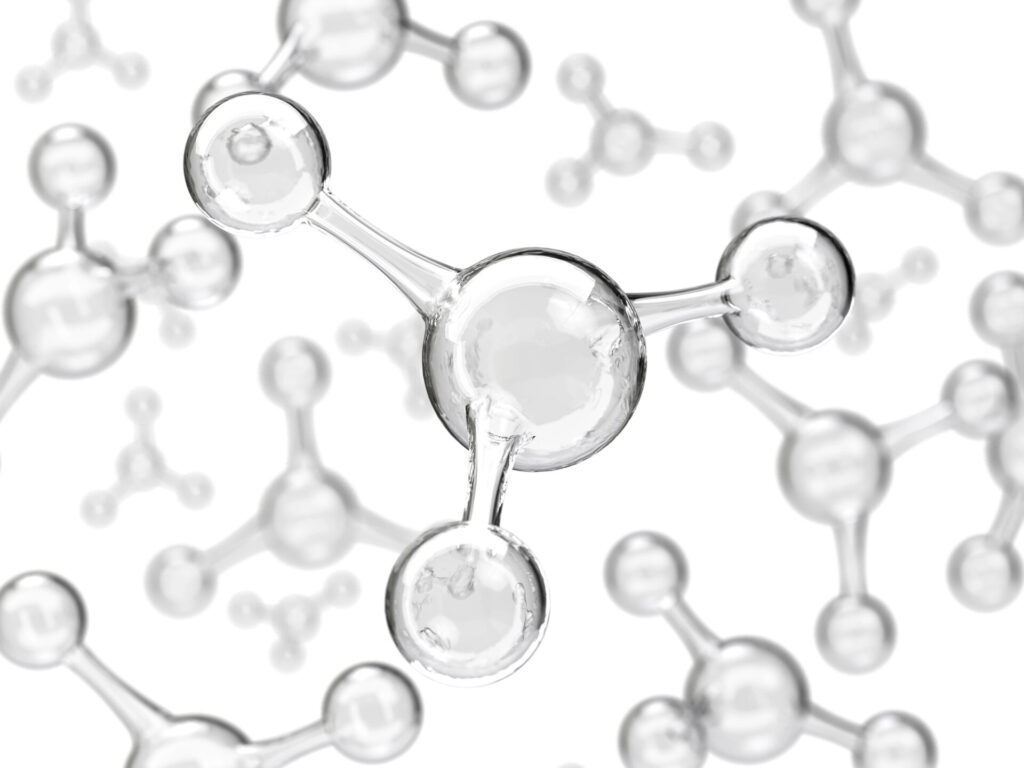For the vast majority of your patients, a daily multi is a vital component of a comprehensive nutrition protocol. Surveys of American adults consistently reveal deficiencies and inadequacies in vitamin D, magnesium and other essential vitamins and minerals. After decades of fortified and enriched food, severe nutrient deficiencies are rare. But even shortfalls have both short-term impacts and long-range effects.
“Micronutrient inadequacies may elicit symptoms of general fatigue, reduced ability to fight infection and impaired attention, memory, mood and cognitive function,” says Chris D. Meletis, Naturopathic Physician. “Micronutrient inadequacies may also have important implications for long-term health and can increase the risk for chronic diseases, including age-related eye diseases, diabetes, osteoporosis, cardiovascular disease and cancer.”1, 2, 3, 4, 5
Beyond the basics, a strategic blend of phytonutrients not only complements the effects of essential vitamins and minerals, but also offers additional benefits.
“Even though the modern food supply is fortified and enriched with vitamins and minerals, most Americans are still missing important phytonutrients,” says Meletis. “Phytonutrients have been researched and shown to possess antioxidant, anti-inflammatory and other beneficial properties, including neuroprotective, anti-aging, protection from UVB-induced carcinogenesis, immuno-modulatory and anti-cancer activities.”
The synergistic and complementary effects of phytonutrients on vitamins and minerals are well established. For example, the antioxidant activity of citrus fruit has been attributed not only to vitamin C, but also to flavonoids and other phytochemicals, Meletis says. Other nutrients, like lutein, astaxanthin and zeaxanthin—vital for vision protection and a range of physiological functions—are lacking in the American food supply.
A comprehensive multi should include a combination of phytonutrients, especially specific antioxidants shown to reduce oxidative stress and inflammation, mitigate DNA damage, protect the heart, support eye and skin health, and reduce the risk of cancer and neurodegenerative disorders. Evidence-based nutrients to look for:
- Lycopene: cancer protection, cardiovascular care. Lycopene modulates the expression of genes involved in cell cycle control, DNA repair and apoptosis, and has been extensively researched for its chemopreventive properties. Lycopene has been shown to inhibit cell proliferation, induce apoptosis, slow tumor growth in prostate, lung and breast cancer. In human studies, lycopene decreased the spread of prostate cancer and lowered prostate-cancer mortality. Other research suggests supplementing with lycopene reduces the risk of prostate, stomach, lung and breast cancer, and some cancers associated with inflammation. Lycopene protects cardiovascular function through a variety of mechanisms, and may reduce the risk of neurodegenerative disorders, including Alzheimer’s and Parkinson’s disease. It also plays a part in skin health, protecting against the immediate effects of UV radiation as well as long-term damage, improving skin elasticity and minimizing fine lines, age spots and other signs of aging.6, 7, 8, 9, 10, 11
- Lutein: eye and brain health. Lutein’s role in vision health is well-known, with multiple studies suggesting its potential to reduce the risk of age-related diseases of the eye. Lutein, along with zeaxanthin and meso-zeaxanthin, occurs in the human macula and retina. Collectively known as macular pigments, these compounds filter out harmful short-wavelength visible light and protect eye membranes from oxidative stress. Studies link higher levels of lutein with better vision, especially in dim light, and research suggests supplementing with lutein can reduce the risk of developing age=related macular degeneration (AMD) and cataracts and prevent their progression. Lutein is also concentrated in regions of the brain associated with learning and memory, where it’s been shown to selectively perform antioxidant and anti-inflammatory functions. Research demonstrates lutein’s ability to protect brain health and improve cognition, and studies suggest a higher intake may prevent cognitive decline in aging. Lutein also appears to improve cognition across the lifespan, with some studies suggesting middle-aged people with higher levels of lutein have neural responses that more closely mirror those of younger people, rather than those of the same age.12, 13, 14, 15, 16, 17
- Zeaxanthin: vision protection, skin support. Like lutein, zeaxanthin is a powerful antioxidant that plays a crucial role in eye health, absorbing blue light and protecting against UV exposure and light-induced oxidative damage in the retina. Zeaxanthin and lutein are known to complement each other, with synergistic actions that enhance the benefits of each individual compound. In studies, zeaxanthin in combination with lutein has been shown to retard cataracts and AMD, and a higher intake of both is linked with improved visual function and reduced risk of age-related eye diseases. One proprietary formulation derived from marigold flowers, called Lutemax2020, is standardized to contain lutein and zeaxanthin (including meso-zeaxanthin) in a ratio mirroring the ratio naturally found in the macula. In studies, Lutemax2020 significantly increased macular pigment optical density, associated with improved eye health and a reduced risk of AMD. Zeaxanthin also protects the skin from UV-induced damage and may reduce the risk of melanoma, and a higher intake of lutein and zeaxanthin are linked with a lower incidence of squamous cell carcinoma.18, 19, 20, 21, 22, 23
- Astaxanthin: accelerated antioxidant protection. Considered one of the most potent natural antioxidants, astaxanthin is significantly more powerful than vitamin C and beta-carotene, with some studies suggesting it may be 500 times more effective than vitamin E. Astaxanthin’s unique antioxidant capacity is associated with a variety of benefits, including cognitive, cardiovascular and immune health, exercise performance and skin support. Astaxanthin appears to inhibit enzymes that break down collagen, improving skin texture, elasticity and hydration, and studies link astaxanthin with reductions in wrinkles, age spots and crow’s feet around the eyes. Research also suggests astaxanthin is superior to beta carotene and other carotenoids in protecting against skin cancer. Astaxanthin’s antioxidant capacity improves indices of exercise metabolism, performance and recovery, and studies show supplementing with astaxanthin reduces exercise-induced delayed onset muscle soreness and speeds post-workout recovery. AstaReal, a natural form of astaxanthin derived from H. pluvialis microalga, has been extensively studied for a range of applications, with dozens of studies highlighting its efficacy.24, 25, 26, 27, 28, 29
- Resveratrol: vital aging and longevity. The cardioprotective effects of resveratrol are well known, with research demonstrating its ability to decrease DNA damage, reduce vascular inflammation and atherogenesis, improve lipid profiles and protect cells against oxidative stress. Resveratrol’s anti-inflammatory properties are linked with a reduced risk of cardiovascular events such as atherosclerosis and thrombosis, as well as other diseases associated with aging. A growing body of research suggests resveratrol could regulate cellular aging and extend lifespan by activating SIRT1, one of a family of compounds thought to act as regulators of longevity. Resveratrol’s impact on other hallmarks of aging, including telomere attrition and cell senescence, have been widely researched, and numerous clinical trials highlight its protective effects against age-associated disorders, such as diabetes, Alzheimer’s, liver and kidney diseases, and breast and colorectal cancer.30, 31, 32, 33, 34, 35, 36
- Phytonutrient blend: comprehensive cellular protection. Along with these antioxidants, a combination of standardized extracts from specific fruits and vegetables help maintain cellular function and protect against age-related declines. Blueberries, abundant in anthocyanins, are associated with cognitive and vision support, as well as a reduced risk of cardiovascular disease. Bioactive compound in strawberries modulate collagen synthesis and protect skin from oxidative stress and aging. Spinach is rich in lutein and zeaxanthin, known for their beneficial effects on eye health, as well as nitrates, linked with lower blood pressure and improved endothelial function. Elderberry’s immunomodulatory effects are well established, and its polyphenols are also shown to reduce inflammation and support the cardiovascular system. Phytochemicals in pomegranate extracts have been shown to protect skin from UV damage and increase collagen production, and pomegranate constituents show promising effects for reducing the risk of certain types of cancer, such as breast and prostate cancer, and protecting against age-related cognitive decline.37, 38, 39, 40, 41, 42, 43
References
- Drake VJ. Micronutrient inadequacies in the US population: an overview. Linus Pauling Institute: Micronutrient Information Center. Oregon State University, 2018.
- Gropper SS. The role of nutrition in chronic disease. Nutrients. 2023 Jan 28;15(3):664.
- Ames BN. Low micronutrient intake may accelerate the degenerative diseases of aging through allocation of scarce micronutrients by triage. Proc Natl Acad Sci U S A. 2006 Nov 21;103(47):17589-94.
- Rehman S et al. Micronutrient deficiencies and cardiac health. Front Nutr. 2022 Oct 14;9:1010737.
- Ames B et al. Are vitamin and mineral deficiencies a major cancer risk? Nat Rev Cancer. 2002; 2, 694–704.
- Przybylska S, Tokarczyk G. Lycopene in the Prevention of Cardiovascular Diseases. Int J Mol Sci. 2022 Feb 10;23(4):1957.
- Kapała A et al. The Anti-Cancer Activity of Lycopene: A Systematic Review of Human and Animal Studies. Nutrients. 2022 Dec 3;14(23):5152.
- Kirkegård J et al. Chronic Pancreatitis and Pancreatic Cancer Risk: A Systematic Review and Meta-analysis. Am J Gastroenterol. 2017;112:1366–1372.
- Przybylska S. Lycopene—A bioactive carotenoid offering multiple health benefits: A review. Int J Food Sci Technol. 2020;55:11–32.
- Petyaev IM et al. Lycopene presence in facial skin corneocytes and sebum and its association with circulating lycopene isomer profile: Effects of age and dietary supplementation. Food Sci Nutr. 2019 Apr; 7(4): 1157–1165.
- Balic A et al. Do we utilize our knowledge of the skin protective effects of carotenoids enough? Antioxidants (Basel). 2019 Jul 31;8(8):259.
- Yagi A et al. Lutein Has a Positive Impact on Brain Health in Healthy Older Adults: A Systematic Review of Randomized Controlled Trials and Cohort Studies. Nutrients. 2021 May 21;13(6):1746.
- Li J, Abdel-Aal EM. Dietary Lutein and Cognitive Function in Adults: A Meta-Analysis of Randomized Controlled Trials. Molecules. 2021 Sep 24;26(19):5794.
- Lobo V et al. Free radicals, antioxidants and functional foods: Impact on human health. Pharmacogn Rev. 2010 Jul;4(8):118-26.
- Renzi-Hammond LM et al. Effects of a lutein and zeaxanthin intervention on cognitive function: a randomized, double-masked, placebo-controlled trial of younger healthy adults. Nutrients. 2017 Nov; 9(11): 1246.
- Min JY et al. Serum lycopene, lutein and zeaxanthin, and the risk of Alzheimer’s disease mortality in older adults. Dement Geriatr Cogn Disord.2014;37(3-4):246-56.
- Wallace TC. A comprehensive review of eggs, choline, and lutein on cognition across the life-span. J Am Coll Nutr.2018 May-Jun;37(4):269-285
- Roberts JE, Dennison J. The Photobiology of Lutein and Zeaxanthin in the Eye. J Ophthalmol. 2015;2015:687173.
- Mares-Perlman JA et al. Lutein and zeaxanthin in the diet and serum and their relation to age-related maculopathy in the Third National Health and Nutrition Examination Survey. Am J Epidemiol. 2001;153(5):424–432.
- Roberts RL et al. Lutein and zeaxanthin in eye and skin health. Clin Dermatol.2009 Mar-Apr;27(2):195-201.
- Obana A et al. Effect of an antioxidant supplement containing high dose lutein and zeaxanthin on macular pigment and skin carotenoid levels. Sci Rep. 2020 Jun 24;10(1):10262.
- Stoddard M et al. Skin Cancer Prevention: A Review of Current Oral Options Complementary to Sunscreens. J Drugs Dermatol. 2018 Dec 1;17(12):1266-1271.
- Heinen MM et al. Intake of antioxidant nutrients and the risk of skin cancer. Eur J Cancer. 2007 Dec;43(18):2707-16.
- Davinelli S et al. Astaxanthin in skin health, repair, and disease: a comprehensive review. Nutrients. 2018 Apr; 10(4): 522.
- Tominaga K et al. Cosmetic benefits of astaxanthin on human subjects. Acta Biochim Pol. 2012; 59(1):43-7.
- Arakane K. Superior skin protection via astaxanthin. Carotenoid Science 2002; 5: 21–24.
- Ito N et al. The protective role of astaxanthin for UV-induced skin deterioration in healthy people—a randomized, double-blind, placebo-controlled trial. Nutrients. 2018 Jul; 10(7): 817.
- Brown DR et al. Astaxanthin in Exercise Metabolism, Performance and Recovery: A Review. Front Nutr. 2018 Jan 18;4:76.
- Barker GA et al. Astaxanthin Supplementation Reduces Subjective Markers of Muscle Soreness following Eccentric Exercise in Resistance-Trained Men. Muscles. 2023, 2(2), 228-237.
- Gal R et al. The Effect of Resveratrol on the Cardiovascular System from Molecular Mechanisms to Clinical Results. Int J Mol Sci. 2021 Sep 21;22(18):10152.
- Cheng CK et al. Pharmacological basis and new insights of resveratrol action in the cardiovascular system. Br J Pharmacol. 2020 Mar;177(6):1258-1277.
- Pyo IS et al. Mechanisms of Aging and the Preventive Effects of Resveratrol on Age-Related Diseases. Molecules. 2020 Oct 12;25(20):4649.
- Zhou DD et al. Effects and Mechanisms of Resveratrol on Aging and Age-Related Diseases. Oxid Med Cell Longev. 2021 Jul 11;2021:9932218.
- Li YR et al. Effect of resveratrol and pterostilbene on aging and longevity. Biofactors. 2018 Jan;44(1):69-82.
- Granzotto A et al. Resveratrol and Alzheimer’s disease: message in a bottle on red wine and cognition. Front Aging Neurosci. 2014; 6: 95.
- Li F et al. Resveratrol, a neuroprotective supplement for Alzheimer’s disease. Curr Pharm Des. 2012;18(1):27-33.
- Wallace TC. Anthocyanins in cardiovascular disease. Adv Nutr. 2011 Jan;2(1):1-7.
- Nomi Y et al. Therapeutic Effects of Anthocyanins for Vision and Eye Health. Molecules. 2019 Sep 11;24(18):3311.
- Vendrame S et al. In Vitro and In Vivo Evaluation of Bioactive Compounds from Berries for Wound Healing. Curr Dev Nutr. 2024 Jan 14;8(2):102078.
- Giampieri F et al. Polyphenol-rich strawberry extract protects human dermal fibroblasts against hydrogen peroxide oxidative damage and improves mitochondrial functionality. Molecules. 2014 Jun 11;19(6):7798-816.
- Festa J et al. Elderberries as a potential supplement to improve vascular function in a SARS-CoV-2 environment. J Food Biochem. 2022 Nov;46(11):e14091.
- Osman AG et al. Elderberry Extracts: Characterization of the Polyphenolic Chemical Composition, Quality Consistency, Safety, Adulteration, and Attenuation of Oxidative Stress- and Inflammation-Induced Health Disorders. Molecules. 2023 Mar 31;28(7):3148.
- Rahmani AH et al. Potential Antitumor Effects of Pomegranates and Its Ingredients. Pharmacogn Rev. 2017 Jul-Dec;11(22):136-140.






